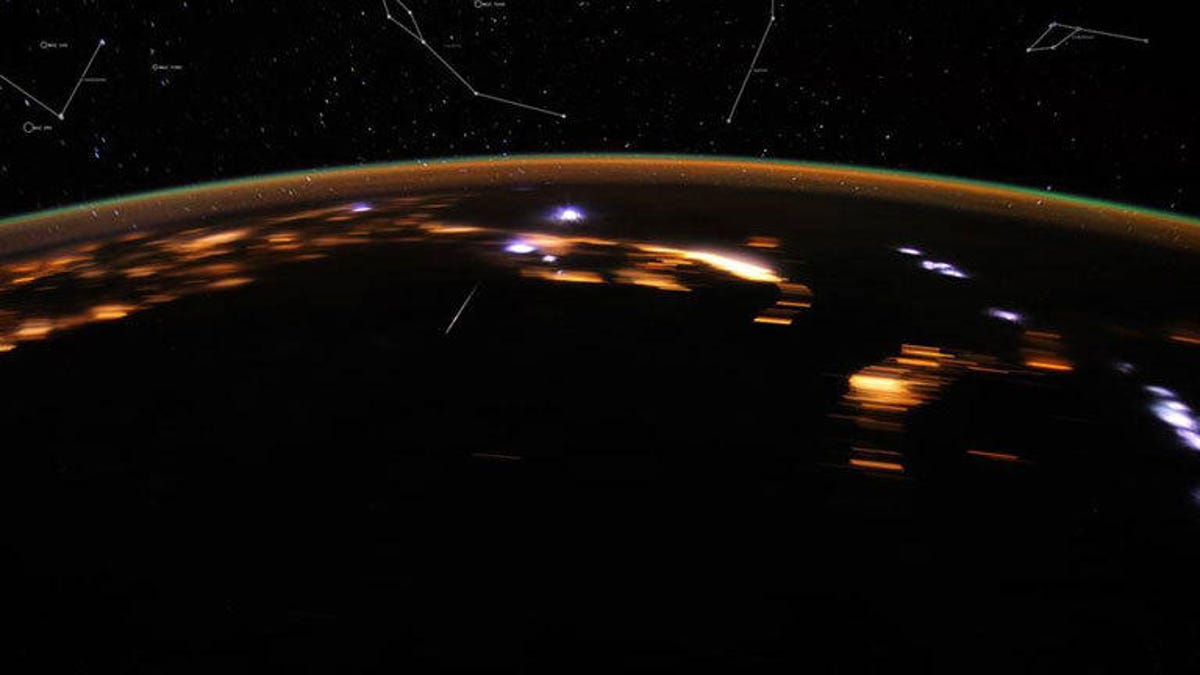Lyrid meteor shower, the best night sky show for months, is still active
The peak is past, but you might still be able to catch a few shooting stars this weekend. Besides, you probably don't have anywhere else to go.

The 2012 Lyrid meteor shower as captured by astronaut Don Pettit aboard the International Space Station.
The annual Lyrid meteor shower officially started last week, and although the peak happened earlier this week, the night sky show will stay active through this weekend, according to the Griffith Observatory. You can catch the show starting at 10 p.m., but this shower is perfect for early risers, as the hour or two before dawn is probably the best time to spot the "shooting stars."
The Lyrids are bits of rock and dust left behind by the comet C/1861 G (Thatcher). Each year around this time, the Earth drifts through a cloud of debris from an earlier visit by the comet -- its most recent trip through the inner solar system was in 1861 -- and those particles collide with our upper atmosphere at a speed of about 27 miles (43 kilometers) per second.
If you can find a dark sky with minimal light pollution, cloud cover and a clear view, you might catch a few meteors per hour. And with the moon near its new phase, there won't be any moonlight to ruin the experience.
The Lyrids aren't necessarily the most spectacular meteor shower of the year, but they do come after an entire season without any major showers between January and April. So it's a great opportunity to get outside and just spend some time looking up, especially with most of us spending lots of time indoors during these unprecedented times.
"Compared to other meteor showers, the Lyrids tend to produce bright meteors and an occasional fireball," writes Robert Lunsford of the American Meteor Society.
You should be able to see the Lyrids by just lying back, letting your eyes adjust to the dark and relaxing with the widest view of the sky possible. But if you can identify the constellation Lyra, the harp, the Lyrids appear to radiate out from this point in the sky, so it's worth making sure it's in your field of view.
If you can't wake up before sunrise, it can still be worth looking for meteors at any time after about 10 p.m. local time in the evening. They're less likely to appear higher in the sky and probably fewer will be viewable, but you do have an increased chance of seeing a so-called "Earth-grazer" near the horizon that burns longer and brighter than your average meteor.
I suggest making the effort to get out and see some of these meteors when you can. We can all use a distraction right now and this could be the best meteor-spotting opportunity until November. The big Perseids meteor shower in August is typically the biggest of the year, but in 2020 it will be partly washed out by the moon.
If you catch any fireballs, please share the footage with me @EricCMack.

